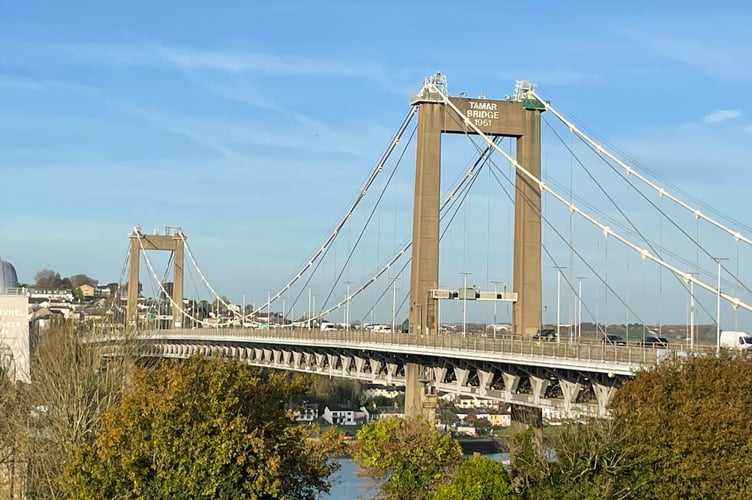CARD payment times for users of the Tamar Bridge have been cut in half thanks to the implementation of new and fast readers at all of the toll booths.
Whereas the average time for a payment to be processed was previously taking around 17 seconds, changes made have now slashed that figure to around six seconds, making it an easier and speedier experience for those crossing the River Tamar from Cornwall, says the management team.
Coral Jonas, Tamar Bridge manager, said: “We did an analysis of the toll plaza and it was to quick to see that our payment speeds, especially for those people using cards, were not as fast as they could be.
“It was taking on average around 17 seconds to process card payments and in some cases, it could take up to 40 seconds. We’ve put in some new machines and now we have brought the processing speed down to six seconds, making a huge difference to the traffic flow across the bridge.”
With a daily average of 44,000 vehicles crossing the Tamar Bridge, the need to keep a constant eye on the traffic trends is something that is certainly keeping staff busy.
Councillor Martin Worth, co-chairman of the Tamar Bridge and Torpoint Ferry joint committee, added: “People can go to a supermarket and a 15 second wait for their card payment doesn’t seem that long.
“Since Covid, we’ve seen the numbers using the bridge have dropped by around 10 per cent. Before there was a great pattern, now it’s very sporadic and there is no real pattern to the data we are receiving.
“That figure is similar to other areas around the country, but when you are running a business which, at the end of the day is providing a service to so many people – and is funded by the tolls, to lose 10 per cent off your top line is huge.”
Regulars users of the Tamar Bridge will note that maintenance of the structure, which was opened to the public for the first time in October 1961, is an ongoing process.
“Things like maintenance, staffing, other improvements, these are all impacted by inflation,” explained Cllr Worth. “We therefore have to find £17-million a year to run the operation.

“A third of that goes on maintenance, a third on wages, but we’ve also got a debt payment we have to cover as well. In the late 90s we set up a fund for the replacement of the ferries and that’s always been in credit to about £15-million to £20-million.
“The European Union then came along and said we had to strengthen the bridge and put a new deck in so that we could take 44-tonne lorries. As part of that work, National Highways helped design the idea of widening the bridge using the cantilevers. That project alone cost £34-million, but we are the only bridge in the world to have been strengthened and widen, but also stay open whilst those works have been carried out.
“And because they worked so well, we kept them. The money to pay for that, however, we still have to find, so the other third of our income – which is between £5-million and £8-million a year – goes on that debt repayment.
“That’s the challenge going forward, but we have to keep the bridge and the ferries operating to the highest standard. As part of us moving forward, we’ve devised the Tamar 2050 plan which, we hope, working with all the various parties and the government, will allow us to work around a lot of those issues but, at the same time, also look to get cheaper tolls for locals and improve our service.”
Members of the Tamar Bridge and Torpoint Ferry Joint Committee, which includes five representatives each from both Cornwall County Council and Plymouth City Council, have already been in detailed discussions with local MPs Fred Thomas, Luke Pollard and Anna Gelderd to discuss further improvements for those looking to cross the Tamar.
Meanwhile, works are continuing on the latest phase of a major modernisation upgrade of the Saltash Tunnel.
As part of a generational refurbishment project, the tunnel and traffic control system within the 36-year-old tunnel will be upgraded, including electrical distribution, new LED lighting, fans and electronic signage.
The 410-metre long, three-lane bi-directional structure is the only tunnel in Europe operating by tidal flow.
As such, the tidal flow corridor relies on specialised technology – and the £25-million programme is seen as essential to maintain the tunnel for many years to come.
The current tunnel and lane control system is more than 20 years old, approaching the end of its life and is being replaced and upgraded as part of an extensive programme of work, which will maintain safety within the tunnel, provide more reliable journeys and reduce the risk of unplanned closures.




